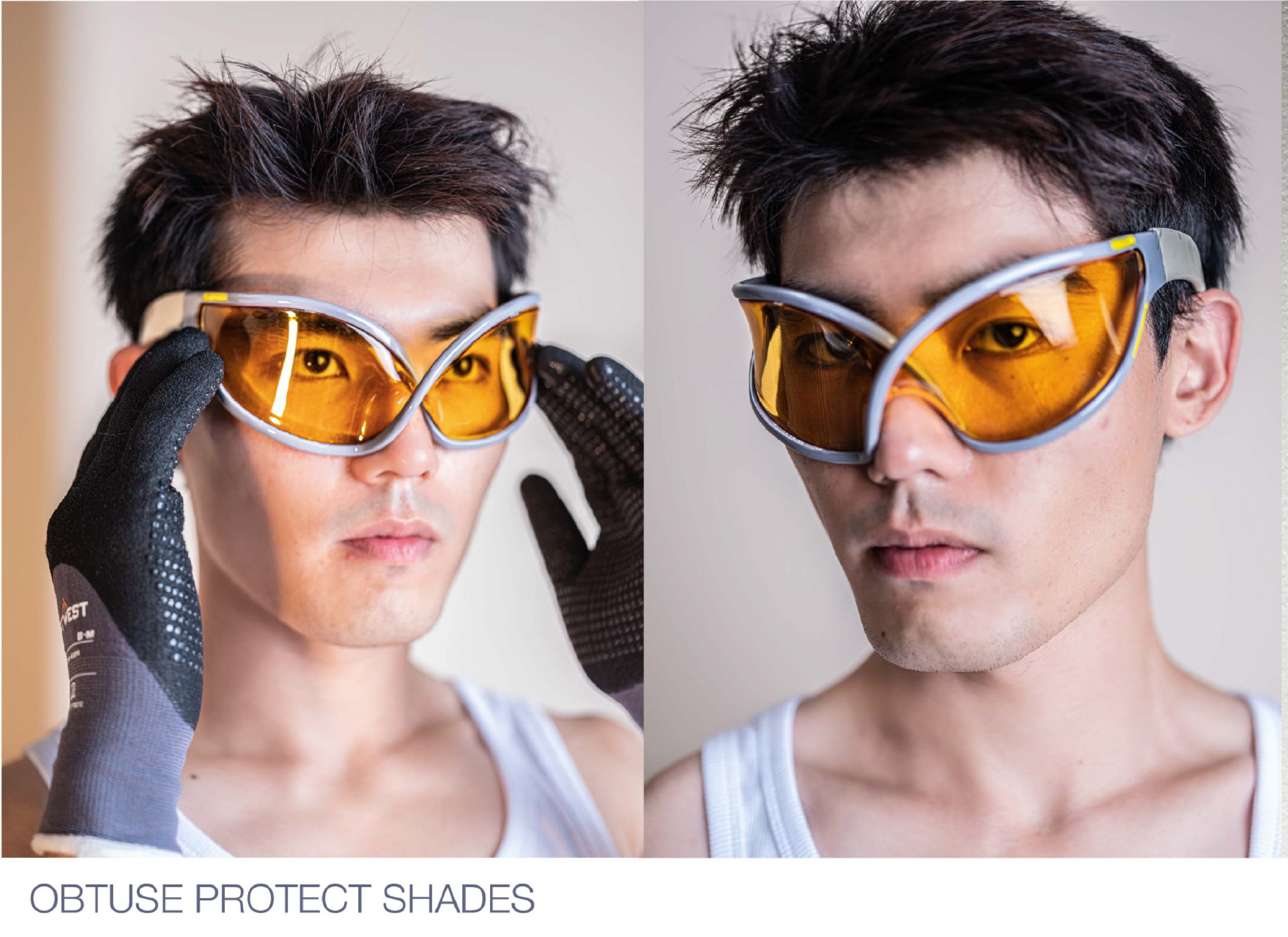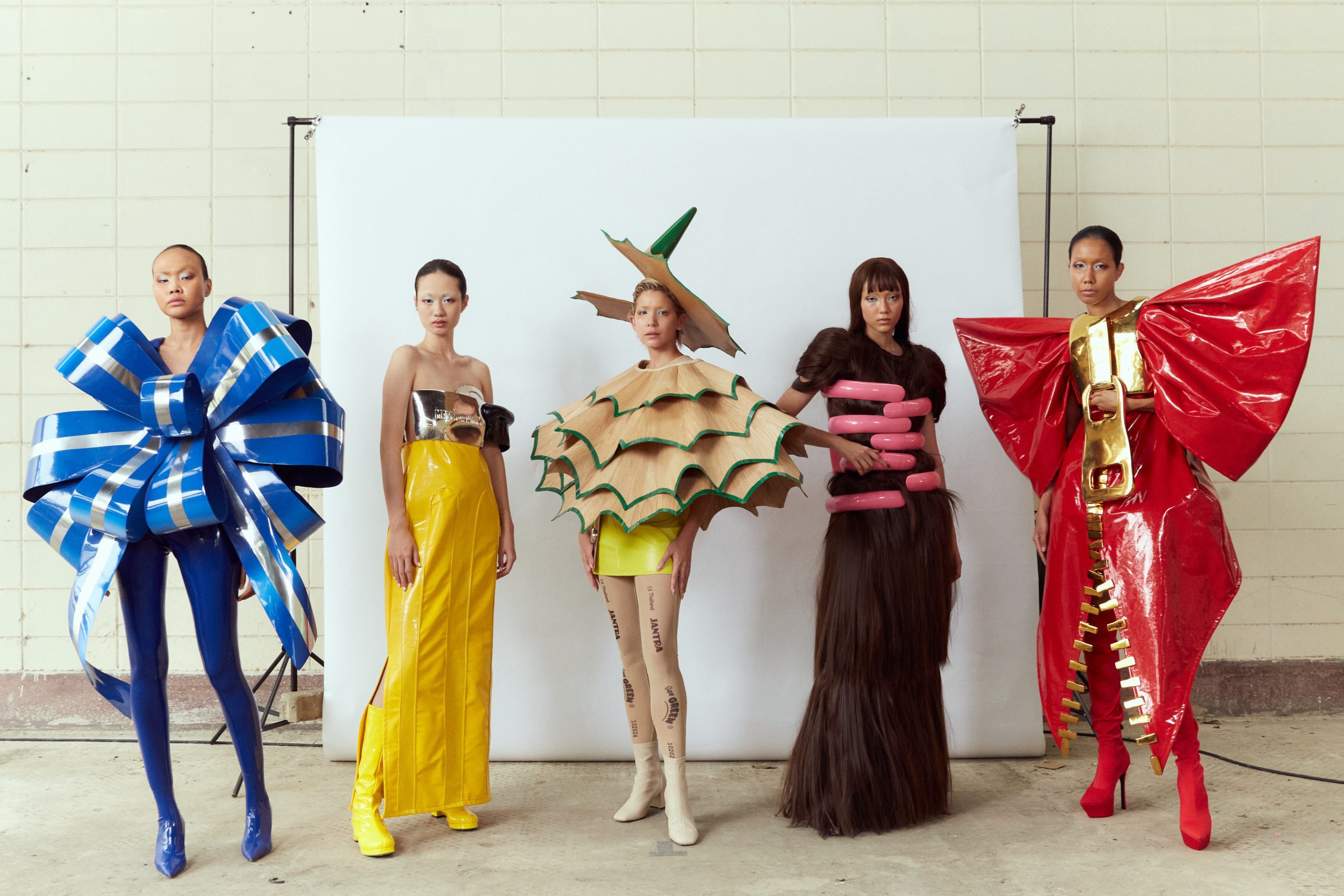As digitally native generations, most of us—Millennials and beyond, have grown up surrounded by technology with access to the internet. We watched and learnt as the paradigm shifted in societal structures with the rise of social media networking, readily adopting them and adapting ourselves and our lives to be a part of cyberspace.
Our cyber lives have already formed an inseparable layer over our social spheres.
People are now accustomed to questioning their buying decisions in line with the image they uphold on social media. Their thinking patterns have evolved to meet the overwhelming demands of hyper aesthetic social platforms like Pinterest and Instagram. Since its launch in 2010, Instagram has gathered 4.5 billion social media users who spend an average of 145 minutes a day curating their digitally native persona. Every piece of clothing is judged and gauged —is this aesthetic enough? Am I trendy enough? Will this outfit look good in pictures?
But why should these questions about fashion matter to the netizens of today? The answer lies in understanding how social media shapes a person’s identity. Fashion and style are some core building blocks of a person’s identity—falling under the broad category of non-verbal communication. The impact of having a curated feed with high-quality content on a user’s life is undeniably phenomenal. In fact, a shocking survey by SquareSpace, a website building and hosting company, revealed that 60% of Gen Z and 62% of Millennials believe that how they present themselves online is more essential than how they present themselves in person.
Social media demands high aesthetic quality in large quantities, making customers consume more and spend more. The fashion industry, too, has adapted to satisfy this growing demand by shortening trend cycles and hosting thousands of shows in a year. Fast fashion like Zara brands have taken it even further by following a 52 micro-season fashion calendar year, launching a new collection every week. Ultra-fast fashion suppliers such as Shein overcompensate by launching 700-1,000 new styles(SkUS) daily at ultra-cheap prices.
Most consumers who are conscious of their spending, prefer to opt for ultra-fast and fast fashion brands to fulfil their needs. Fashion and style, lifestyle Influencers create and style highly aesthetic and stylish looks for OOTD (outfit of the day) and OOTN(outfit of the night) that followers crave and indulge in. To keep up with the demand of always showcasing something new every day, thousands of influencers do mega-hauls of ultra-fast fashion brands. These ephemeral pieces of clothing are often discarded or returned after being worn once for the shoot.
Digitally oriented demand for fashion has escalated the problems of overconsumption, perpetuated return culture and contributed to worsening the climate crisis. These cheap and “trendy” fast fashion items come with a hefty cost to the planet. The fashion apparel industry is infamous for generating 10% of the world’s carbon emissions, 92 million tonnes of textiles waste per year, and 20% of global wastewater. But, around 165 companies, most fast fashion brands, are responsible for about 24% of textile and apparel sector emissions, said a November 2021 report by cKinetics.
Brands like Boohoo, for example, use toxic chemicals, dangerous dyes, and synthetic fabrics that seep into water supplies, and, each year, 11 million tons of clothing is thrown out in the US alone. These garments—full of lead, pesticides, and countless other chemicals—rarely break down. Instead, they sit in landfills, releasing toxins into the air. In addition to environmental impact, fast fashion affects the health of consumers and garment workers. Harmful chemicals such as benzothiazole—linked to several types of cancer and respiratory illnesses—have been found in apparel on the market today.
Many environmental and climate activists have voiced their concerns about fast-fashion and enough awareness about its harms has been spread. Woke customers now want to know where their purchase is coming from; how it’s made and what it is made with. Sustainable fashion is moving to the mainstream. But with detailed repositories of the self, hyper-curated from a selection of real-world events, as rightly said by Dani Loftus of Draup “we are fast approaching a reality where our digital existences are of equal, or superior, value to our physical ones”.
So how can we fulfil these demands poised by social media like Instagram—without breaking the bank or the back of the planet, while still evolving our digital identities? The answer to this digital dilemma is digital too – Digital or Virtual Fashion. Virtual Fashion refers to any type of fashion article (clothing, accessories, jewellery) that exists in the virtual realm. Its broad definition spans the clothes that exist on avatars, the skins in gaming, and digital-outfits which can be worn by people – like the Iridescence dress.
Digital fashion can be defined as the visual representation of garments and accessories that are created with computer technologies and various software. These digital garments and accessories only exist digitally instead of physically – meaning they can’t be touched or felt. However, they can still be worn and touted on social media, making for a perfect outlet for self-expression without causing environmental harm.
A shift to Digital Fashion offers brands the opportunity to sell commodified self-expression and newness without sacrificing sustainability. Currently, this shift is prevalent in the form of Digi-tailoring, i.e., the digital juxtaposition or “tailoring” of a digital fashion item on the customer’s photo by the brand selling the digital attire. In this process, after adding a Digital Fashion item to the Cart, the buyer selects an accompanying photo—the one they wish to wear the digital garment in. On receipt of payment, the brand acts as a ‘Digital Tailor’ – using a specially designed game engine to put the buyer in the clothes, and sending it over in 24-72 hours.
Dani of “This Outfit Does not Exist” is a pioneer, known for dressing digitally on Instagram, wearing digi-tailored outfits. Each week she dons digital attire showcasing independent brands and designers or clothes bought on the digital fashion marketplace – DressX. With advancements in AR, wearers now have the ability to flex their Digital Fashion instantly and wear the same outfit multiple times. Zero10 App is one such specialized service, stepping in to provide AR-enabled digital fashion products to be “worn” in videos.
Fashion designers on a budget have already begun experimenting with the boundaries of couture through digital couture outfits. The 3D design applications and mediums such as Blender, Unreal Engine, and CLO3D offer unlimited options to experiment with materials, and the physicality of fashion—High Fashion brands are selling digital goods with fantastic effects like shoes that appear to be on fire and liquid dresses. These tools enable people to participate in red-carpet events from the comfort of their feeds, donning exquisite gowns from their own digital wardrobes, made by digital ateliers.
“For some consumers, digital fashion is a natural extension of applying social media filters on platforms such as Instagram and Snapchat”, says Simon Windsor, cofounder and joint managing director at Dimension Studio, an agency that worked with Balenciaga on its video game. Digital fashion also enables the democratisation of high fashion, giving people the opportunity to fulfil their fashion dreams at a fraction of the monetary and planetary costs while reducing consumers’ fashion carbon footprint while enabling and growing their identities and encouraging self-expression.
The negative environmental impact of physical fashion comes from the vast quantities of water used in the farming of textile crops like cotton, dyeing of fabrics, use of chemical dyes, waste generated from cutting, sampling, sewing, finishing; packaging materials, logistical factors such as long distance transportation by ships or air, and the tonnes of discarded clothing piled up in landfills. With digital fashion, most of these factors and processes are entirely eliminated from the production process – as electricity and RAM are the main resources consumed in the production, transportation and use of digital garments.
A study by The Fabricant and The Imperial College Of London, illustrates that Environmental pollution caused by chemicals in the physical design and production phase amounts to 12,300 kg. Digital-only generates 0.692 kg. As per Daria Shaplova, founder of Dress X, “At Dress-X, the total carbon footprint of producing one digital item is 95% less than the average production for a physical garment.” Their calculation is based on the Carbon Trust’s report that indicates a men’s white t-shirt is responsible for emitting 6.5 kg of CO2e into the atmosphere, while in comparison, one hour is spent creating a digital garment, which requires energy that emits 0.312 kg CO2e.
If the demand for digital fashion reaches close to a billion garments, this figure of low emissions may begin to change. Cloud computing for digital dressing on such a huge scale would require a sharp upsurge in energy to power the algorithms to output the billion garment target. In this event, renewable energy sources to power this business model at scale will be crucial to maintaining the paradigm-shifting sustainability benefits of digital fashion.
While digital fashion is enjoying publicity through NFTs, most of the consumers of the physical fashion industry are unaware and untapped. The global Digital Fashion market is expected to grow by 95.94%, worth USD 6.7 Billion by 2027 compared to a 6.7% growth of the fast fashion market to 56.2 Billion USD as per a Market Growth report. These statistics are also an indication that in the next five years, most of us will own at least a few AR-enabled and 3D digital fashion outfits to dress our digital selves on Instagram.
However, the value of Digital Fashion is not as a substitute for its physical counterparts, but rather as their complement. Digital Fashion has many applications in the physical industry as well – 3D prototyping and virtual sampling, AR enabled Try-ons, 3D models and imagery for ecommerce platforms to take pre-orders for clothing. According to the Fabricant, Digital samples replacing physical garments during design and development phases reduce the brand’s carbon footprint by up to 30%. Digital fashion is a tool in the different segments of physical fashion, such as design, marketing and communication.
While mass adoption of digital fashion as the primary way of dressing on Instagram, solves a lot of issues associated with over-consumption and environmental pollution; it could broaden the gap between “Instagram vs Reality” and contribute to a further disconnect between our digital selves and our physical selves. Finding a balance between our cyberlives and real lives, conscious consumption and grounding ourselves from time to time would be key to avoiding such potential disconnects.
Written by Urja Kumbhare, Co-founder, Opulentia Designs LLP





